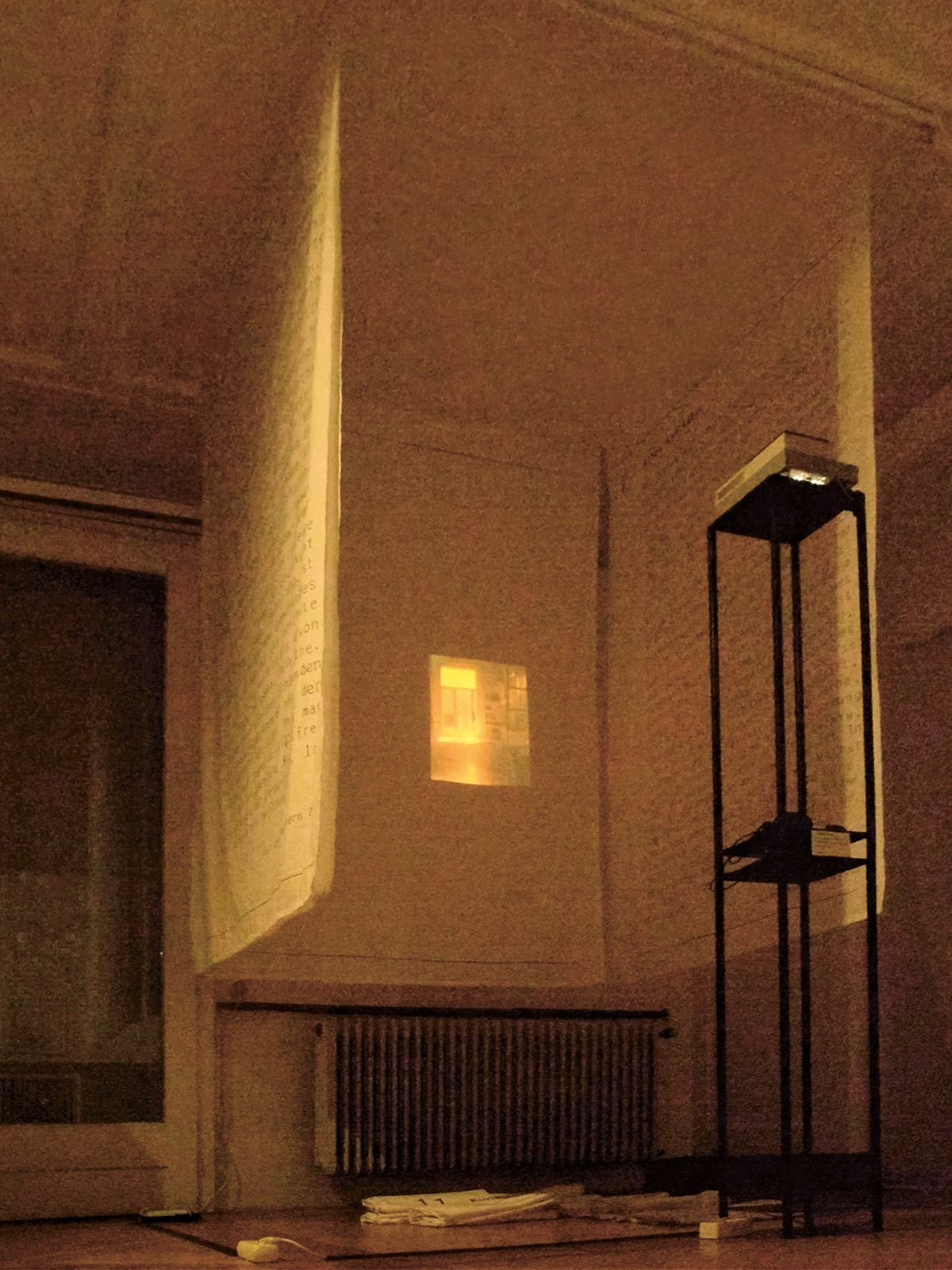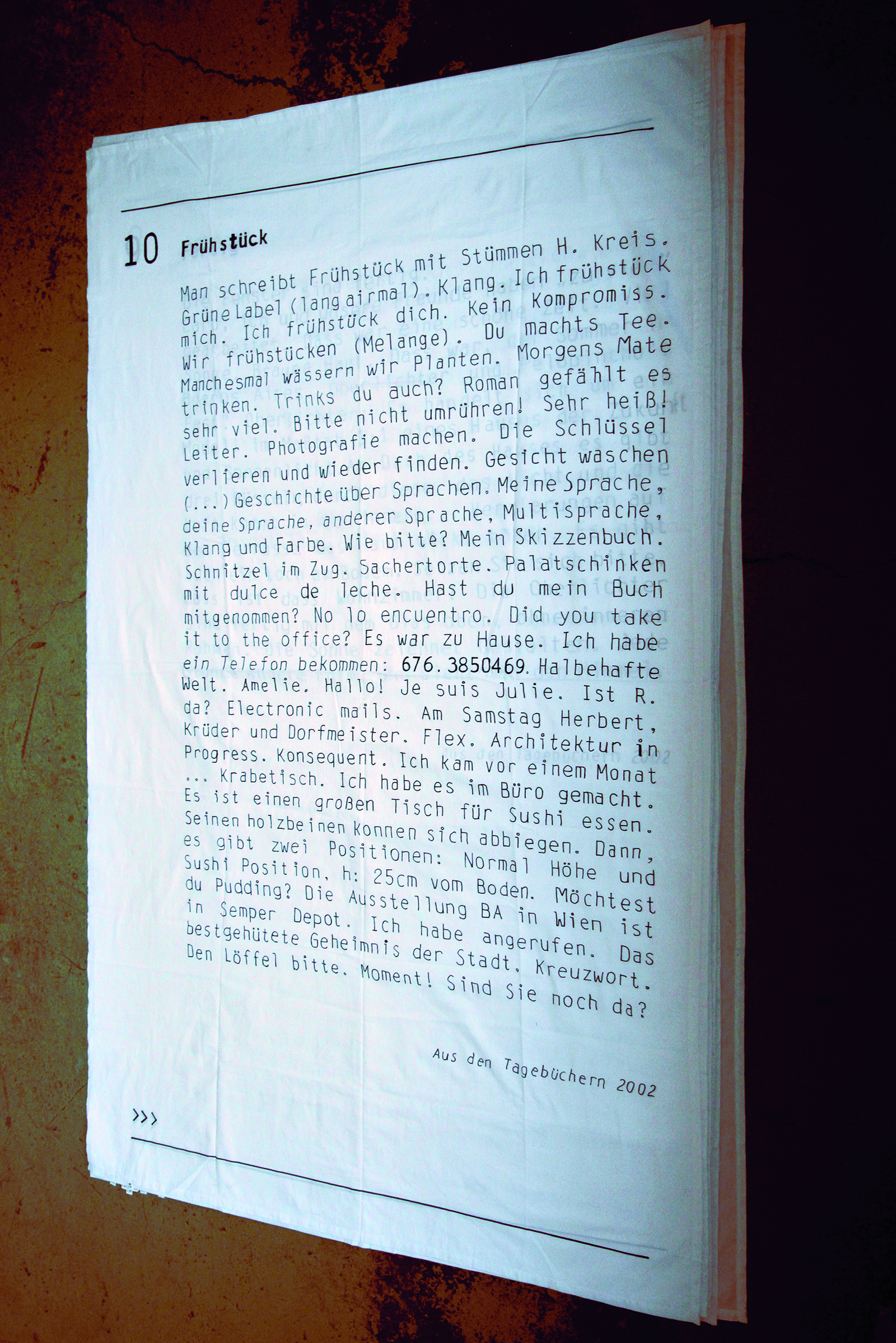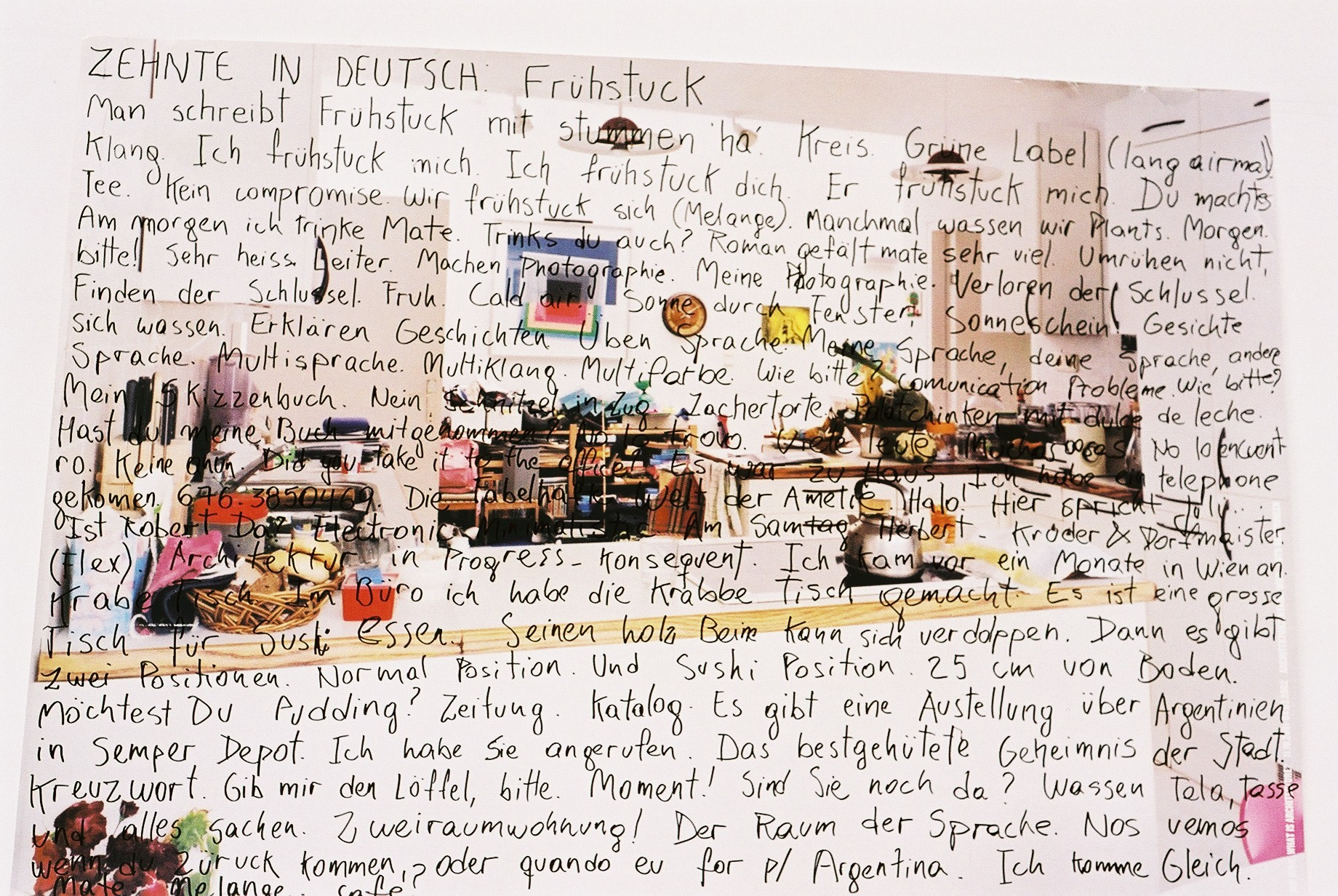
The work comes in four variations:
(2011) – Emotionale Passagen 2011; LAI, Lateinamerika Institut, Vienna. Slide show, couch, written posters, canon voice piece
(2012) – LA MIA CAMERA
-expanded
Site-specific intervention in the context of Emotionale Passagen, WUK Projektraum, Vienna
(2012) – LA MIA CAMERA
-ma chambre, mein Zimmer, mi cuarto, my room Installation, site-specific in the context of Kaleidoskop ATELIER FRANKFURT, Frankfurt am Main
(2014) – LA MIA CAMERA
Kunstzelle WUK, Vienna
Backlight object, various personal items, soundtrack loop
LA MIA CAMERA
-ma chambre, mein Zimmer, mi cuarto, my room
2012 Installation, site-specific in the context of Kaleidoskop ATELIER FRANKFURT
Slide projection, inscribed blankets hung and folded like newspapers (Extimum), sound track
RUTH HORAK
Notensatz
Text as a material in Juliana Herrero’s work
Longhand is the medium for fast ideas and diaries, school- and homework, to-do and shopping lists, sometimes it even sprouts a letter and is then trying to be as legible as possible, but mostly it is jotted down quickly and refers to something that wants to be remembered. It is a medium against oblivion.
ERSTE (FIRST)
Juliana’s handwriting comes in three varieties: the quickly jotted down diary longhand, filling the pages unevenly, written with various pens, mostly black, mistakes corrected or crossed out, key words encircled, post-its and newspaper cuttings in between, the latter speak a whole different language. The handwritten entries are about Juliana’s personal day-to-day life: German vocabulary sometimes accompanied with little drawings, declinations, overheard phrases in the language that is new to Juliana, articles about the city of Vienna that is new to Juliana so she can learn to find her way around faster. Names of foods, exhibition visits, phone numbers and appointments – the fragmented text material is running alongside the artist’s lifelines. ‘Eine Sprache zu lernen heißt doch, zu lernen, etwas mit Wörtern zu tun [Actually, to learn a language is to learn to do something with words]’[1]claims Michael Long, researcher in language acquisition.
Man schreibt Frühstück mit stummen ‚ha‘. (Frühstück is written with a silent ‘h’)
Text collages from these diaries make up the series Zimmer Plakate[Room Posters]. On the backside and the front of exhibition posters they can be found compressed to 20 pages, everyday remarks are followed by public statements, the clumsy can be found side by side with the eloquent – their realization in the same handwriting unifies them. “Wir haben von ihnen gelernt, dass dieses Land Journalisten braucht, die mehr mit dem Kopf als mit den Eiern arbeiten [We learnt from you that this land needs journalists who work more with their heads than with their balls]”, it says for example in Vierzehnte auf Deutschbetween quotes of very different origin.
The notes, once personal, take on very different dimensions. Additionally, the redundant multi-part title of the piece La Mia Camera, ma chambre, mein Zimmer, mi cuarto, my room(2011-2014), which comes in four versions, explicitly points to the topic of language acquisition which is at the center of the texts – grammar skills, vocabulary, and appropriate use. You only start to get the subtleties of a language once you understand more than 4000 words.
Man schreibt Frühstück mit Stümmen H. (Frühstück is written with a sillent H.)
Compressed yet again, twelve of the twenty texts are then transferred onto big bed sheets. This time they appear in immaculate print though still written by hand, a kind of ‘fair drawing’, and then folded like broadsheet newspapers into a handy size. As with language acquisition, a kind of deepening takes place, Herrero’s notes become more and more ‘cultivated’. What used to initially be diary entries has been turned into an even typeface.
And if we weren’t alphabetized, we could also read these typefaces like drawings. But since we cannot shed our knowledge, we may however be reminded of the associative word collages of DADA by Herrero’s discontinuous texts.
[1]Michael Long, Was können wir noch lernen? Zeit online, October 5th 2010 [www.zeit.de/zeit-wissen/2010/06/fremdsprache-lernen-alter]

Zehnte from the inscribed blankets (Extimum)

Zehnte from the Wall Poster Series
